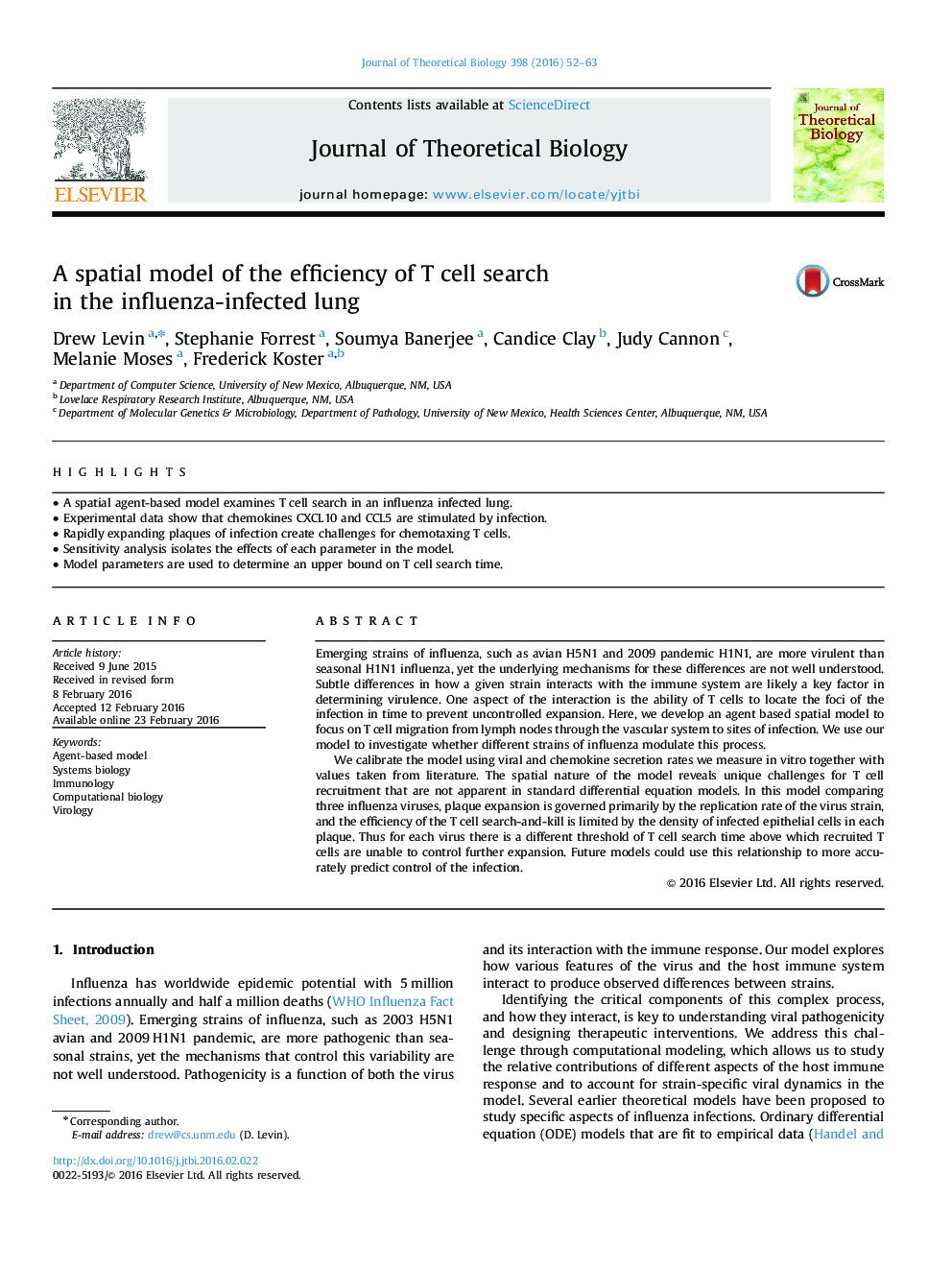| کد مقاله | کد نشریه | سال انتشار | مقاله انگلیسی | نسخه تمام متن |
|---|---|---|---|---|
| 4495816 | 1623812 | 2016 | 12 صفحه PDF | دانلود رایگان |

• A spatial agent-based model examines T cell search in an influenza infected lung.
• Experimental data show that chemokines CXCL10 and CCL5 are stimulated by infection.
• Rapidly expanding plaques of infection create challenges for chemotaxing T cells.
• Sensitivity analysis isolates the effects of each parameter in the model.
• Model parameters are used to determine an upper bound on T cell search time.
Emerging strains of influenza, such as avian H5N1 and 2009 pandemic H1N1, are more virulent than seasonal H1N1 influenza, yet the underlying mechanisms for these differences are not well understood. Subtle differences in how a given strain interacts with the immune system are likely a key factor in determining virulence. One aspect of the interaction is the ability of T cells to locate the foci of the infection in time to prevent uncontrolled expansion. Here, we develop an agent based spatial model to focus on T cell migration from lymph nodes through the vascular system to sites of infection. We use our model to investigate whether different strains of influenza modulate this process.We calibrate the model using viral and chemokine secretion rates we measure in vitro together with values taken from literature. The spatial nature of the model reveals unique challenges for T cell recruitment that are not apparent in standard differential equation models. In this model comparing three influenza viruses, plaque expansion is governed primarily by the replication rate of the virus strain, and the efficiency of the T cell search-and-kill is limited by the density of infected epithelial cells in each plaque. Thus for each virus there is a different threshold of T cell search time above which recruited T cells are unable to control further expansion. Future models could use this relationship to more accurately predict control of the infection.
Journal: Journal of Theoretical Biology - Volume 398, 7 June 2016, Pages 52–63